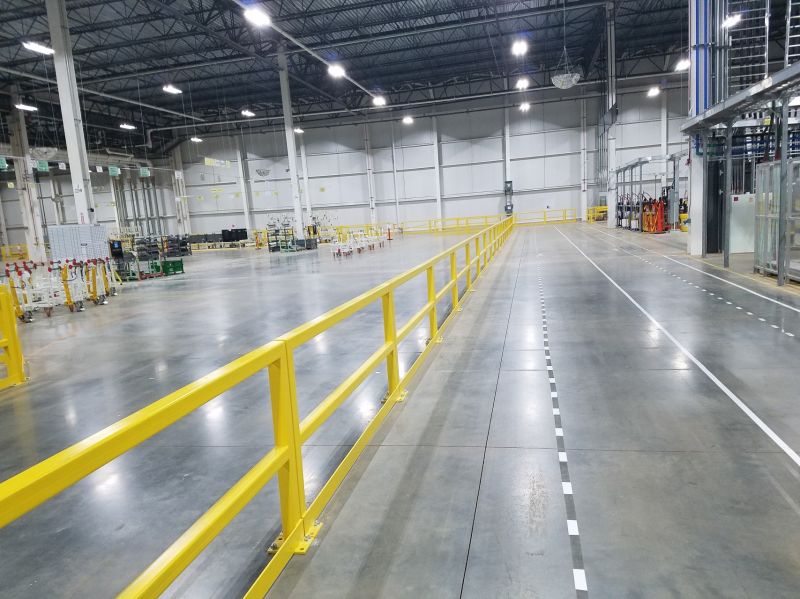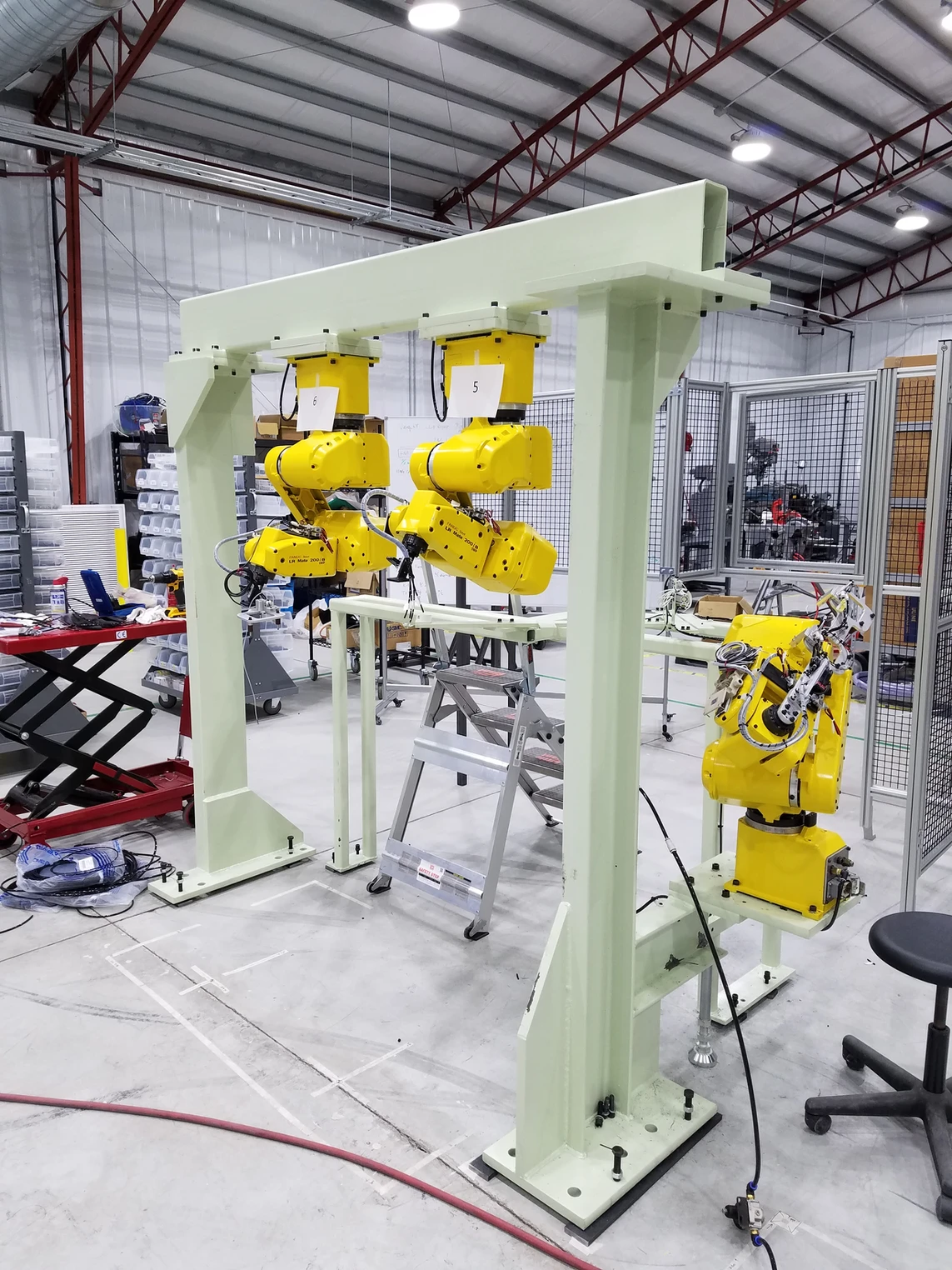I’ll start with the most impactful video that I’ve seen in a while and why fall protection could have prevented an unneeded death or injury of an innocent employee. Most of our customers have some sort of palletizing or automated equipment so this video hits home. We deeply believe in keeping employees safe.
In this video series, you can see “struck-by accidents in construction/vehicle back-over.” This could relate to any forklift activity within a factory. OSHA put out a video of recent fatal accidents in shipyards. While you may not be in the same industry, you may see connections in each of the scenarios. Similar to any factory activity where there are mezzanines and platforms, you can watch this video of this fatal injury at a construction site.
We all care and want to protect our work colleagues. This is the top priority.
The cost of not protecting workers with proper fall protection & aisle guarding
Improper machine guarding is one of the most frequent causes of OSHA citations. Your workers’ compensation could go from five to 20 percent overnight with an incident.
Even if you have subtle issues with unsafe conditions, you could lose employees to a competitive labor market. Consider all the costs and calculate it on your own:
- Cost of hiring
- Cost of onboarding and training
- Cost of learning and development
- Cost of time with unfilled role
The cost of replacing is 1.5-2.0 times an employee’s annual salary. A paper from the Center for American Progress, citing 11 research papers published over a 15-year period, determined that the average economic cost to a company of turning over a highly skilled job is 213% of the cost of one year’s compensation for that role.
More co-bots, different safety considerations
Especially for high-mix, low-volume production environments, collaborative robot safety has come to the forefront for many of our customers.
For example, while industrial robots have been designed to operate at a distance from workers, these machines often lack the sensory capabilities necessary to detect nearby humans. There is also increased concern about workers’ mental health. Some of the stress of working alongside co-bots or automation could be reduced with more guarding and protections.
Many factors are in play from the robot, workpiece, robot work area and end of arm tooling when considering co-bots or collaborative robots. The Fabricator recently went into all aspects including safe fixturing, guarding requirements, fume extraction, arc flash and additional safety like visually confirming the status of the robot with sufficient warning should there be malfunction.
It’s important to find a fabricator who will find those intricacies of fall protection & guarding proactively for you.
Fabricators need to consider movement in the factory
We are often asked to do mezzanines, ladders and platforms. One of my colleagues wrote an article recently.
He called out that,
“One of the “aha” moments for customers often have is making the platform or mezzanine railings too high or low. The design of one of our customer mezzanines had the average 38″ to 42″ rail height, which is OSHA minimum heights.
Say a person is 6′ or 5’10” tall. This height might be too low based on the variance of their height and have them reaching too far over the railing. A person standing next to the fencing and working on the mezzanine to install the product might be tempted to ignore the safety factor, reaching too far out to be safe. A good way to offset this risk is having one side be higher than the other. The backside is higher, so the users cannot fall backwards, over the 5′ high back-fencing.” Read 8 Questions to Ask When Scoping: Mezzanines, Platforms or Stairways.
Fabricators should scope the intricacies of fall protection and guarding
Recently, we installed aisle guarding to protect automated bots & tuggers. There are intricacies both, on site where the automation occurs along with on the actual unit being shipped. One custom fall guard fencing section required shorter widths and heights because we realized, after walking the floor, that the tuggers and forklifts that were backed into charging systems were lower than previous believed.

Because of our heavy due diligence, we were able to catch these intricacies before fabricating the final 2700′ of aisle guarding. Read the full case study.
Fabricators should look at function; and reduce production line downtime
Even when working with extremely talented mechanical and design engineers that develop robotic cells; our manufacturing designers can spot issues before they go to the floor – saving time and money.
In this instance, our manufacturing engineer spotted that while the designs implied mirror requirements, they actually needed two left-handed components rather than left- and right-hand, mirrored components.
The customer asked that we produce several different styles and shapes of safety guards, with visibility to see the robotic cell beyond it. While the fence was basic, we needed to do several variations for a winding floor plan with different openings around the robotic cell.

Read the full case study of how we developed a robotic support frame and safety fence.
In another instance, we had to reverse engineer guarding and provide a quick fix while we worked on the updated guarding for a Honda line. Read the full case study.
Material can be a hazard; ensure you are working with competent fabricators
A crankshaft manufacturer requested that we replace an existing robotic gripper series. A robotic end of arm, which is heat resistant and moves hot forgings from one process to another.
They wanted to refurbish two and build one. We analyzed seals, rods, plates and anything that was moving to ensure we could refurbish it.
The robot was used to move forgings from one process to another. It had to be heat resistant. The materials are made of hardened tool steel and some are made out of stainless steel. Most end of arm tooling that touches the piece will be made of harder materials so they won’t wear as badly. It goes on the robot’s head and is programmed to move from point a to b. Read the full case study.


